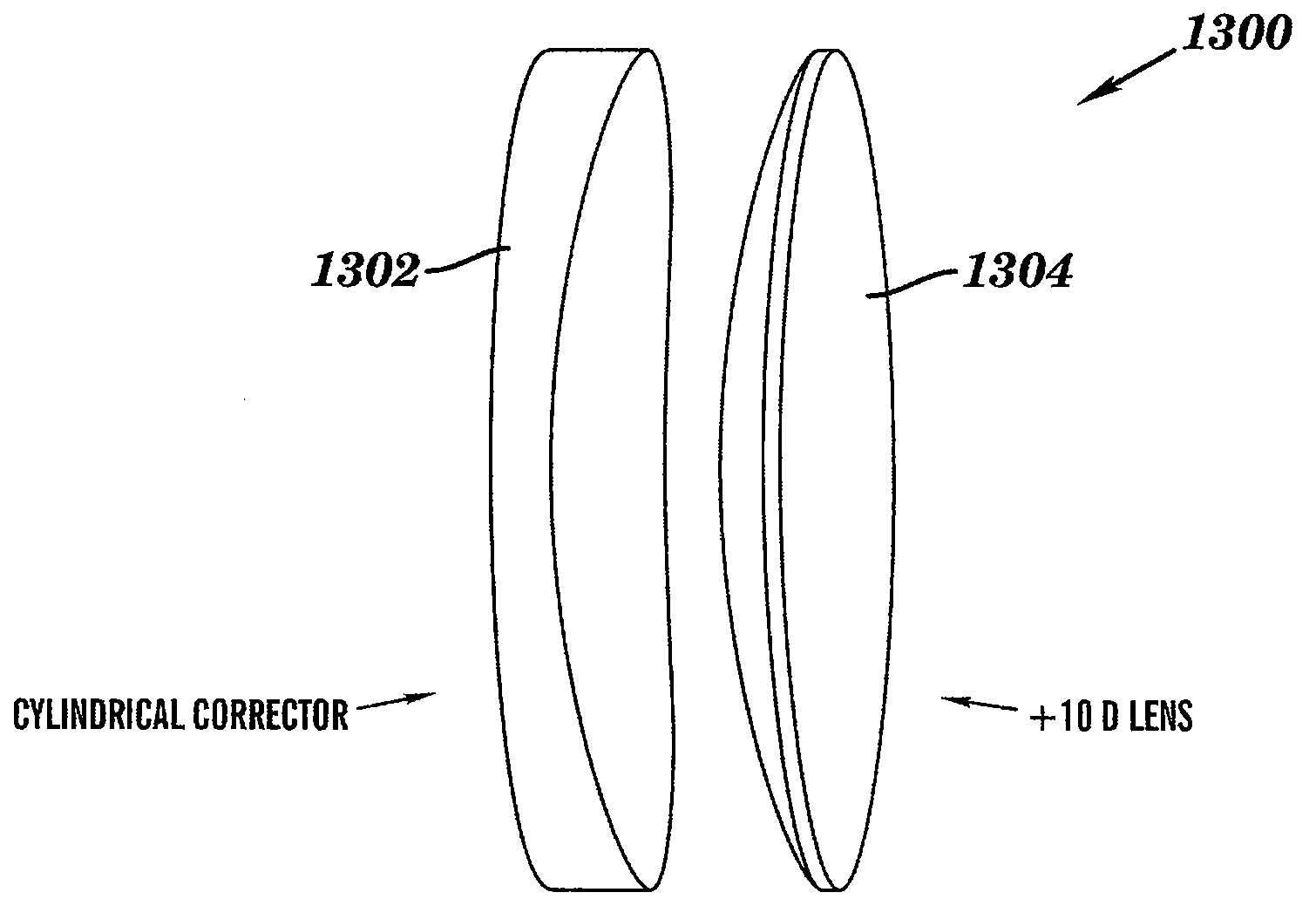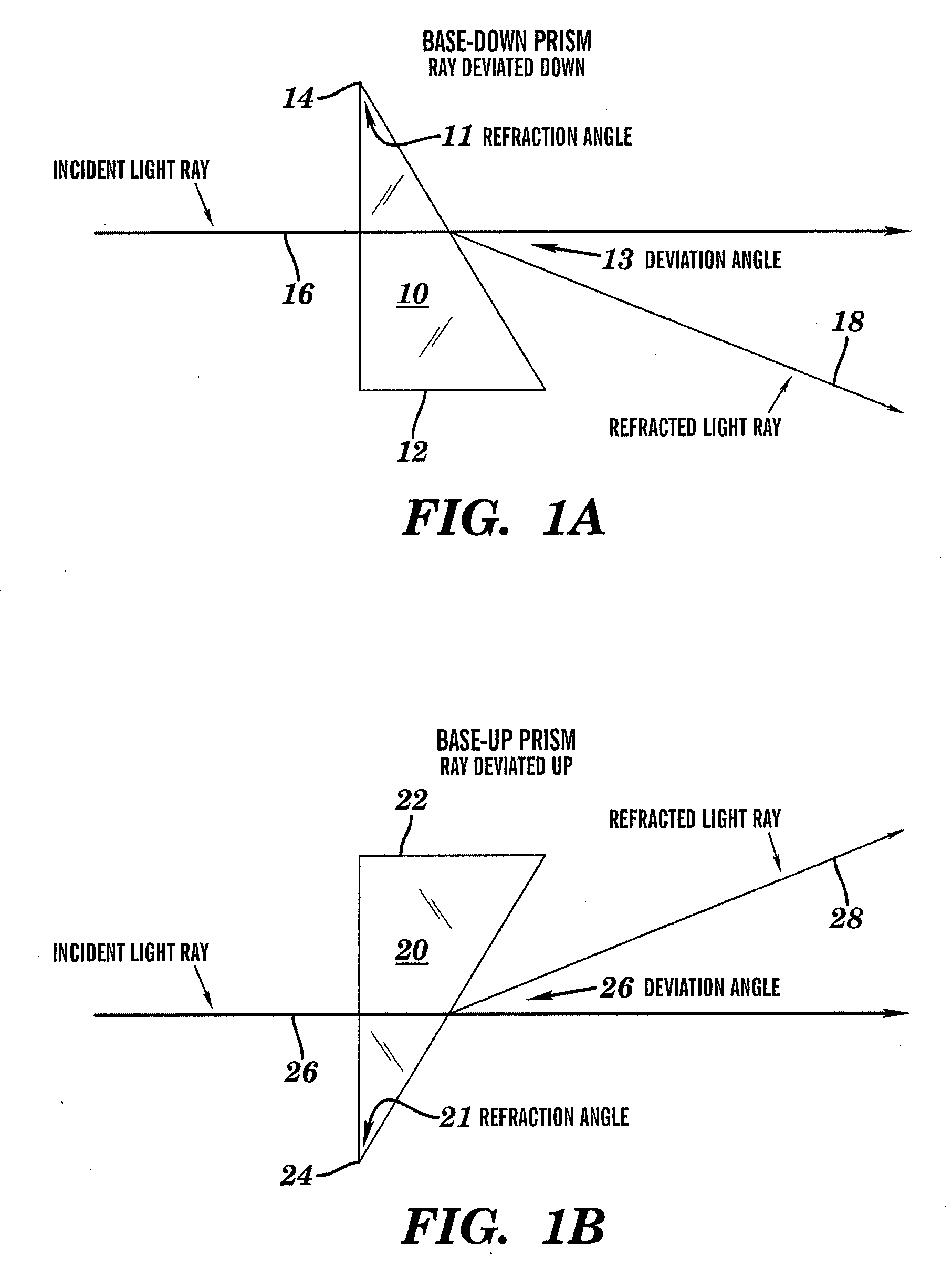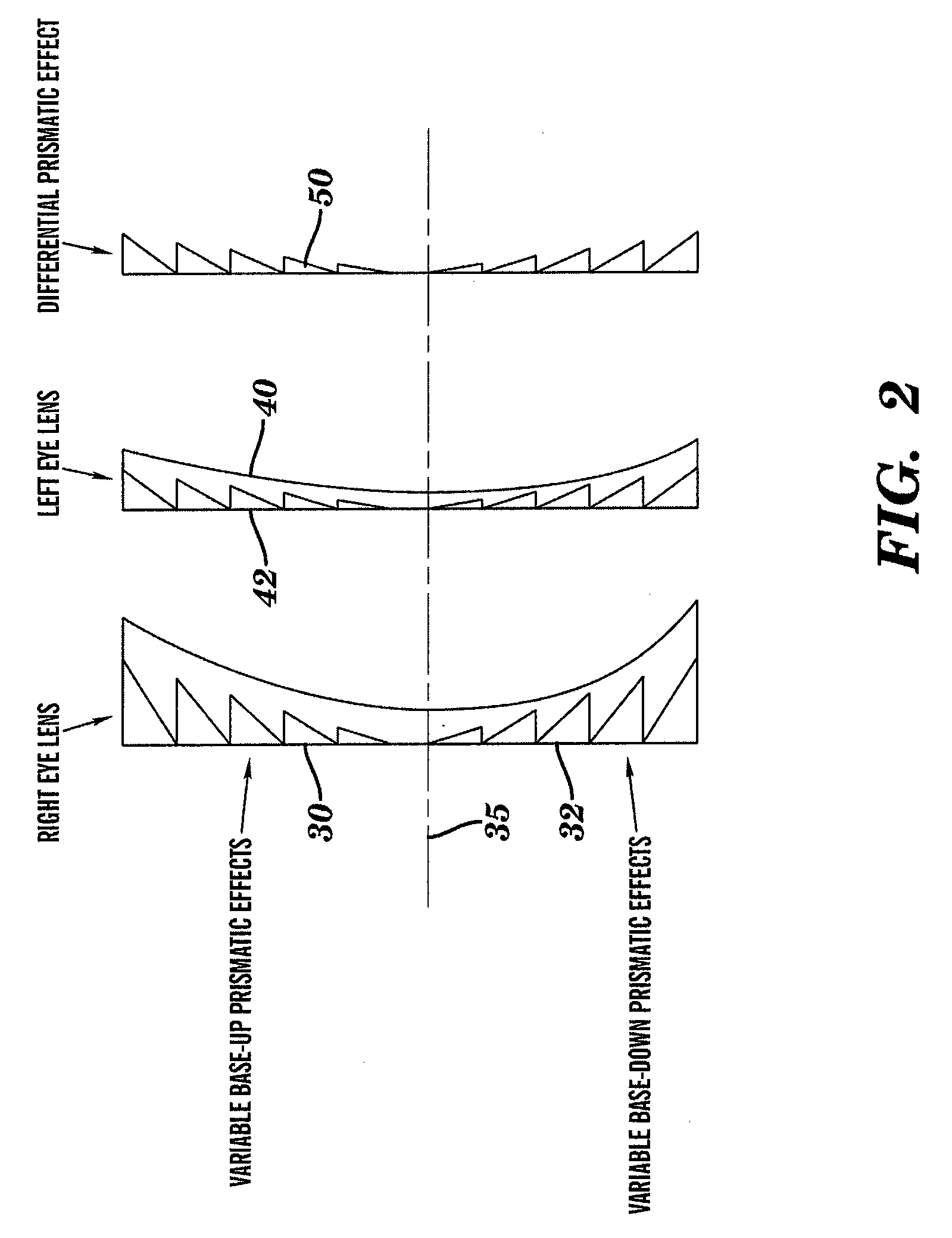Optical elements having variable power prisms
a technology of variable power prisms and optical elements, applied in the field of corrective optical prismatic devices, can solve problems such as diplopia, asthenopia, and difficulty reading, and achieve the effects of reducing the number of optical prismatic devices
- Summary
- Abstract
- Description
- Claims
- Application Information
AI Technical Summary
Benefits of technology
Problems solved by technology
Method used
Image
Examples
example 1
[0044]As an example of the details and benefits of aspects of the invention. The following analysis and calculations are provided. The calculation of vertical imbalances caused by differential prismatic effects due to anisometropia when eyes turn downward to read can be calculated based upon the following assumptions:[0045]Given: Spherical lenses.[0046]Right eye distance lens Rx. F=−4.00 diopters[0047]Left eye distance lens Rx F=−1.00 diopters[0048]Lines of sight intersect lenses 1.0 cm below the optical centers of the lenses.
Note that in the following calculations, the above parameters this will be converted to a decentration (d) of the lens, therefore, d=+1.0 cm. In other words, decentering a negative lens up, introduces a base-down effect that is equivalent in prism diopters to turning the eyes downward.
[0049]According to Prentice's rule, the prismatic effect, PeΔ, of a lens is given by
PeΔ=d×F
where d=distance from optical center (in cm), provided above, and F=dioptric power of t...
example 2
[0053]In this example, the anisometric patient in Example 1 develops a strabismus that requires a +10Δ base-up prism in front of the right eye to restore single binocular vision. In this case it is necessary to correct the anisometropic, Pe, as in Example 1 and to add the +10Δ base up (BU) to design a combined variable power prism (VPP) as shown in the last column of Table B below.
TABLE Bd (cm)ΔPeΔ (RE − LE)VPP (RE)TherapeuticTotal VPP (RE)2.0−6.0Δ BD+6.0Δ BU+10.0Δ BU+16.0Δ BU1.0−3.0Δ BD+3.0Δ BU+10.0Δ BU+13.0Δ BU0.0 0.0 0.0+10.0Δ BU+10.0Δ BU−1.0+3.0Δ BU−3.0Δ BD+10.0Δ BU +7.0Δ BU−2.0+6.0Δ BU−6.0Δ BD+10.0Δ BU +4.0Δ BU
This example illustrates the use of a variable power prism to correct for the differential prismatic effects caused by the anisometropia and incorporate a therapeutic prism of 10Δ base-up for the right eye. FIG. 6 is another example of a representative plot, similar to the plot in FIG. 5, of the effect of one aspect of the invention. FIG. 6 summarizes the data in Table B ...
example 3
[0058]In this example, a calculation of vertical imbalances caused by differential prismatic effects due to anisometropia when eyes turn downward to read is provided. Specifically, the patient in Example 2 also has an astigmatism and requires 10Δ base-up for the right eye. In this calculation, the following assumptions are made:[0059]Given: Spherical lenses.[0060]Right eye distance lens Rx. F=−4.00 Dsph / −3.00 Dcyl axis 180 degrees[0061]Left eye distance lens Rx F=−1.00 Dsph / −1.00 Dcyl axis 135 degrees
The total vertical prismatic effect of the spherical (sph) and cylindrical (cyl) components is given again by Prentice's Rule:
Pe=dFsph+Fcyl(d sin θ cos θ)
The calculations for this example are summarized in Table C below
TABLE CdTotal VPP(cm)Pe (RE)Pe (LE)ΔPeΔ (RE − LE)VPP (RE)TherapeuticTotal VPP(LE)2−14.0−3.0−11.011.010.021.0 BU21.0 BD1−7.0−1.5−5.55.510.015.5 BU15.5 BD00.00.00.00.010.010.0 BU10.0 BD−17.01.55.5−5.510.0 4.5 BU 4.5 BD−214.03.011.0−11.010.0 −1.0 BD 1.0 BU
[0062]In the aspect...
PUM
 Login to View More
Login to View More Abstract
Description
Claims
Application Information
 Login to View More
Login to View More - R&D
- Intellectual Property
- Life Sciences
- Materials
- Tech Scout
- Unparalleled Data Quality
- Higher Quality Content
- 60% Fewer Hallucinations
Browse by: Latest US Patents, China's latest patents, Technical Efficacy Thesaurus, Application Domain, Technology Topic, Popular Technical Reports.
© 2025 PatSnap. All rights reserved.Legal|Privacy policy|Modern Slavery Act Transparency Statement|Sitemap|About US| Contact US: help@patsnap.com



